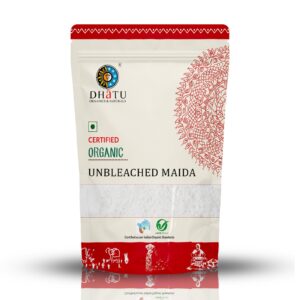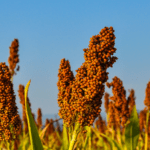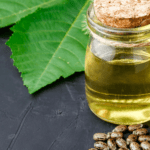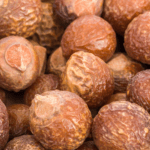SPECIAL DEALS - up to 50% OFF! Track Your Order
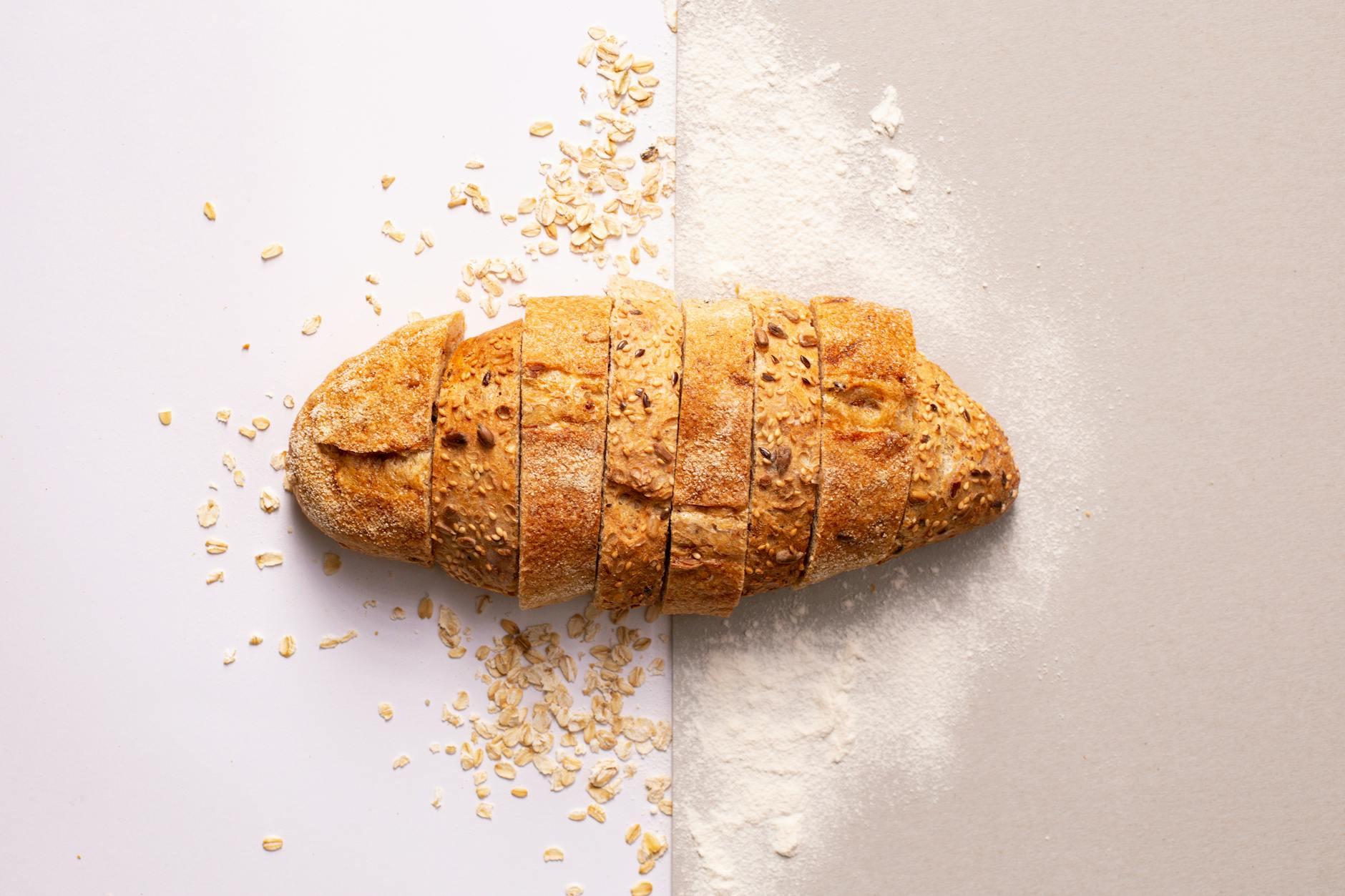
Unbleached vs. Bleached Maida: Composition, Health Impacts, and Processing Methods
Maida is a refined wheat flour used extensively in Indian and South Asian cuisine for baking and cooking. While most people recognize maida as “white flour,” not all white flours are processed the same way. A key distinction lies in whether the flour is bleached or unbleached.
This article dives deep into:
- The processing differences between unbleached and bleached maida
- The nutritional and health impacts of consuming unbleached maida
- The potential harmful effects of bleached maida based on scientific evidence
1. What is Unbleached Maida?
Unbleached maida is simply refined flour made from the wheat endosperm. It is naturally off-white or pale yellow due to the presence of carotenoids in the grain. Unlike bleached flour, it is not treated with chemical agents to whiten or age it.
Over time, unbleached maida naturally whitens through oxidation during storage. This is a traditional, chemical-free process and is preferred by many for its cleaner label and lower chemical exposure.
Recommended products
Organic Unbleached Maida Flour, 500g | Chemical-Free
₹150.00 – ₹450.00Organic Long Wheat Flour (Emmer Wheat) 500g
₹115.00 – ₹620.00
2. How is Bleached Maida Different?
Bleached maida undergoes an extra step in processing where chemical agents like benzoyl peroxide, chlorine dioxide, potassium bromate, or azodicarbonamide (ADA) are added. These agents:
- Whiten the flour rapidly
- Improve baking properties by modifying gluten and starch behavior
- Reduce aging time significantly
However, they also introduce chemical residues and potential toxins into the flour.
3. Chemical Composition: Bleached vs Unbleached Maida
Both types are refined flours made from wheat endosperm, low in fiber and minerals, but rich in starch. The key differences lie in:
- Color: Unbleached is creamy or pale yellow; bleached is stark white
- Residues: Bleached flour may contain benzoic acid, alloxan, or other by-products
- Pigments & Antioxidants: Destroyed in bleaching, retained (slightly) in unbleached
Bleaching does not change the macronutrient profile significantly but may affect trace antioxidants, amino acids, and baking behavior.
4. Health Impacts of Unbleached Maida
Unbleached maida still suffers from the main drawback of all refined flours: it is nutritionally poor compared to whole wheat flour. It is:
- Low in fiber, B-vitamins, and minerals
- High in carbohydrates with a high glycemic index (GI)
- Associated with blood sugar spikes and metabolic issues when overconsumed
Studies have shown high refined grain intake (like maida) is linked to higher risk of:
- Type 2 diabetes
- Weight gain
- Metabolic syndrome
Though better than bleached maida in terms of chemical exposure, unbleached maida should still be consumed in moderation.
5. Harmful Effects of Bleached Maida
1. Residual Chemical By-products
- Benzoic Acid: From benzoyl peroxide breakdown; generally safe in small amounts but can cause allergic reactions in sensitive individuals.
- Alloxan: A diabetogenic toxin found in some chlorine-bleached flours. Known to destroy pancreatic beta cells in animal studies.
- Potassium Bromate: Classified as a probable human carcinogen (banned in many countries, including India).
- Azodicarbonamide (ADA): Linked to respiratory issues and breaks down into semicarbazide – a possible carcinogen.
2. Nutrient Losses
Bleaching destroys natural antioxidants and may degrade some amino acids. These losses, while small, further reduce the nutrient density of the already refined flour.
3. Long-Term Exposure
Repeated consumption of bleached maida may contribute to cumulative chemical exposure and oxidative stress. Though immediate effects are not obvious, the long-term risk of metabolic disorders, allergic reactions, and toxin buildup is a concern.
6. Regulatory Trends
- Many countries (EU, UK, India) have banned chlorine and potassium bromate in flour
- Some U.S. brands still use bleaching agents, though consumers now demand “unbleached” labels
- India has moved towards more natural processing, especially in artisan and organic brands
7. Which is Better? Final Verdict
Unbleached maida is the better choice if you must use refined flour, simply because it avoids chemical residues. But nutritionally, both are inferior to whole grain flours.
Health Priority Ranking:
- Whole wheat flour – Best choice
- Unbleached maida – Cleaner, but still refined
- Bleached maida – Refined + chemical exposure
References (Scientific Journals)
- Nisar, N. et al. (2020). PeerJ – Analysis of benzoyl peroxide and benzoic acid in wheat flour
- Giaccone, V. et al. (2017). Journal of Cereal Science – Alloxan detection in bleached flours
- Nkwatoh, T.N. et al. (2023). Heliyon – Potassium bromate in bread and toxicity risks
- Radhika, G. et al. (2009). Metabolism – Refined grains and metabolic syndrome in Indians
- Ibrahim, R.M. et al. (2023). Scientific Reports – Alloxan toxicity and diabetes model
Note: For a full academic version of this article with citations and data tables, contact us directly.
Discover more from Dhatu
Subscribe to get the latest posts sent to your email.

